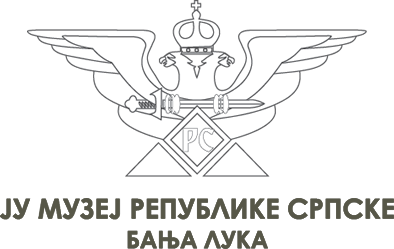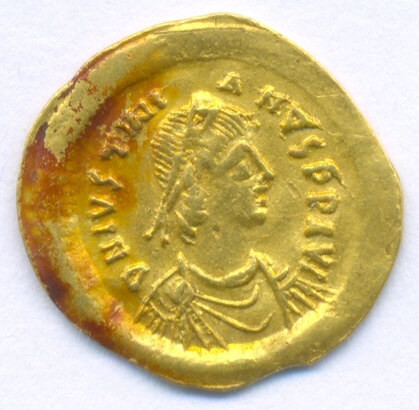 Zlatni tremisis vizantijskog cara Justinijana I
Zlatni tremisis vizantijskog cara Justinijana I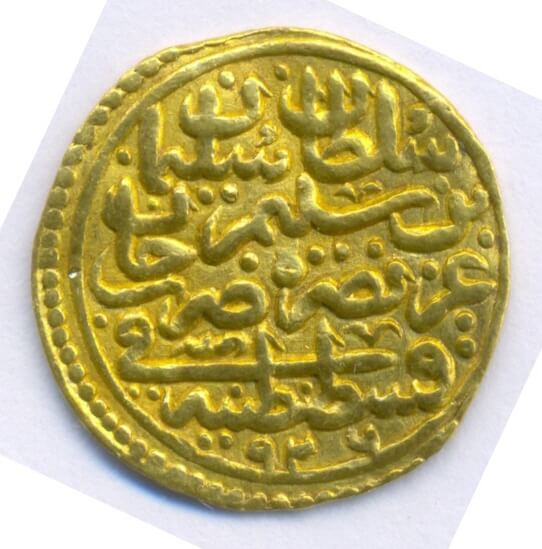 Zlatni altin sultana Sulejmana Veličanstvenog
Zlatni altin sultana Sulejmana Veličanstvenog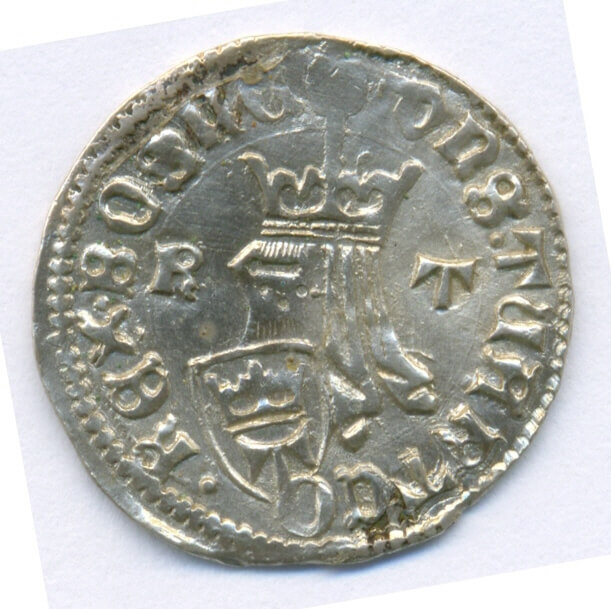 Srebrni groš bosanskog kralja Tvrtka II
Srebrni groš bosanskog kralja Tvrtka IIPermanent Exhibition - Numismatic Collection
Numismatics belongs to the group of auxiliary historical sciences. Its primary focus is the study of money - from its earliest forms to modern-day currency. Money serves primarily as a means of payment and exchange of goods, but it is also a historical document that reflects the economic, political, and cultural circumstances of a particular era.
The Numismatic Collection consists of 2,835 specimens of both coinage and paper money. Chronologically, it is divided into four segments: ancient, medieval, early modern, and contemporary money. The majority of coin specimens belong to the Roman, Hungarian, Ragusan (Dubrovnik), Ottoman, and Austro-Hungarian periods. Regarding paper money, the collection is dominated by the Yugoslav dinar (from the Kingdom of Yugoslavia, FNRJ, and SFRJ), the dinar of the Republic of Srpska, and the Austro-Hungarian krone.
In addition, the Collection includes rare examples of coinage such as currency from the Spanish colonies in Latin America and coins from the ancient North African state of Numidia.
- Curator
 Gold Tremissis of Byzantine Emperor Justinian I
Gold Tremissis of Byzantine Emperor Justinian IAncient Money
Money has been in use since ancient times. During the period of Roman rule in the territory of present-day Bosnia and Herzegovina, mints operated in Sirmium and Viminacium. Coins produced there circulated across the region, including the area of modern-day Banja Luka. This is evidenced by the discovery of ancient coins at the Kastel Fortress site - such as the gold tremissis of the Byzantine Emperor Justinian I.
 Silver Grosch of Bosnian King Tvrtko II
Silver Grosch of Bosnian King Tvrtko IIMedieval Money
In the late Middle Ages, beginning in the 13th century, Serbian rulers of the Nemanjić dynasty began minting their own coins, marking the entry of the Serbian state into the ranks of highly developed nations with their own monetary systems. Due to its quality, the Serbian silver dinar rivaled the Venetian matapan, which even prompted the famous Dante to place King Milutin in Hell in his Divine Comedy - for allegedly imitating Venetian coinage.
The Nemanjićs were followed by the Kotromanić dynasty, who began minting their own dinars in the 14th century, modeled after Serbian currency. The Numismatic Collection includes the silver grosch of King Tvrtko II (1421 - 1443) and a silver dinar of the last Bosnian king, Stjepan Tomašević (1461 - 1463).
 Gold Altin of Sultan Suleiman the Magnificent
Gold Altin of Sultan Suleiman the MagnificentOttoman Money
region. It is little known that in early 1593, a mint operated in Banja Luka to produce coins for the military campaign being prepared by Hasan Pasha Predojević - an Ottoman commander of Serbian origin from Herzegovina - against the Habsburg lands.
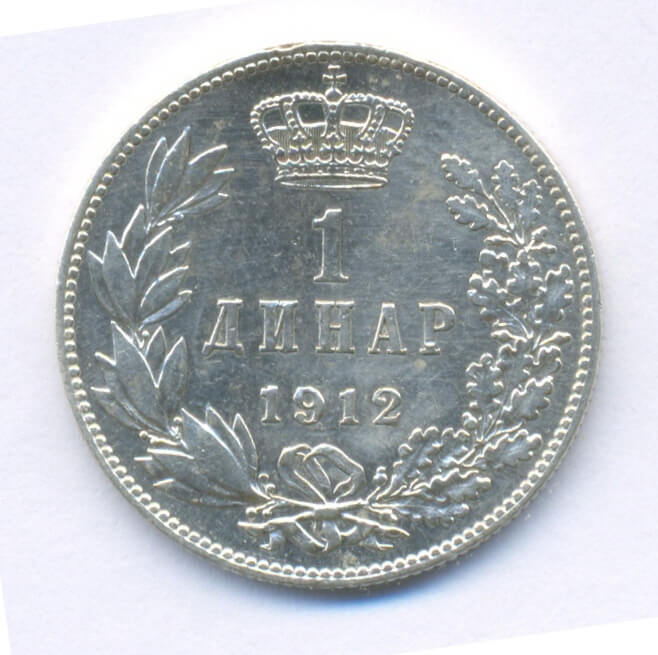 Dinar of the Kingdom of Serbia from 1912
Dinar of the Kingdom of Serbia from 1912Serbian Dinar
The Serbian dinar became the official currency of the restored Serbian state under the Obrenović dynasty in the 19th century. At the beginning of the 20th century, during the reign of King Peter I Karađorđević, the dinar held more value than the Austro-Hungarian krone - even during World War I, while Serbia was under occupation.
With the formation of Yugoslavia, the dinar remained the name and official currency of the new state throughout its turbulent history. For a brief period of only two years, the Republic of Srpska also had its own official currency - the dinar - which was withdrawn from circulation in 1994. Nevertheless, it remains a lasting testament to the time when the Republic of Srpska had monetary sovereignty of its own.
